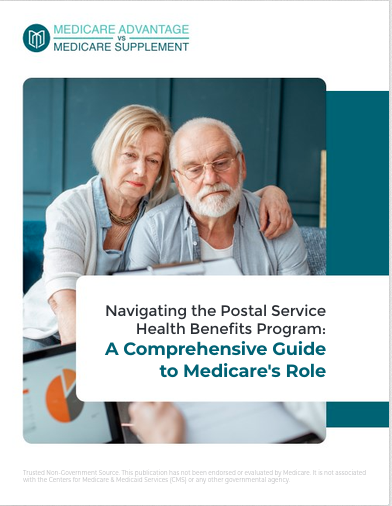Key Takeaways:
- Understanding Medicare’s four parts can help you make more informed decisions about your healthcare coverage.
- Each part of Medicare covers specific services, and knowing what each includes is crucial for effective planning.
Breaking Down Medicare: The Four Parts and What They Mean for Your Coverage
Medicare is a federal health insurance program primarily designed for people aged 65 and older, but it also covers certain younger individuals with disabilities and those with End-Stage Renal Disease. It’s divided into four distinct parts, each offering different types of coverage. Understanding these parts is essential to ensure you get the healthcare you need without unexpected expenses. This article will break down each part of Medicare, explaining what it covers and how it fits into your overall healthcare plan.
Medicare Part A: Hospital Insurance
Medicare Part A, also known as hospital insurance, is a cornerstone of Medicare coverage. It covers inpatient hospital care, skilled nursing facility care, hospice care, and some home health care services. Most people don’t pay a premium for Part A if they or their spouse paid Medicare taxes while working.
Inpatient Hospital Care: Part A covers the costs associated with hospital stays, including semi-private rooms, meals, general nursing, and drugs as part of your inpatient treatment. However, it’s important to note that Part A does not cover private-duty nursing, a private room (unless medically necessary), or personal care items like toothpaste.
Skilled Nursing Facility (SNF) Care: After a qualifying hospital stay of at least three days, Part A can cover the costs of skilled nursing facility care. This includes services such as physical therapy, occupational therapy, and other skilled care. However, it does not cover long-term care or custodial care if that’s the only care you need.
Hospice Care: For those with a terminal illness, Part A covers hospice care, which includes medical care, pain management, and support services for the terminally ill and their families. The goal of hospice care is comfort, not cure, so it’s tailored to ease pain and provide emotional and spiritual support.
Home Health Care: Part A also covers limited home health care services if you are homebound and need skilled nursing care or therapy services. This can include intermittent skilled nursing care, physical therapy, speech-language pathology services, and continued occupational services.
Medicare Part B: Medical Insurance
Medicare Part B covers two types of services: medically necessary services and preventive services. Medically necessary services include services or supplies needed to diagnose or treat a medical condition and that meet accepted standards of medical practice. Preventive services include healthcare to prevent illness (like the flu) or detect it at an early stage when treatment is most likely to work best.
Doctor’s Visits and Outpatient Care: Part B covers doctor visits, outpatient care, home health services not covered under Part A, durable medical equipment (like wheelchairs and walkers), and many preventive services. Part B is crucial for covering the day-to-day medical services you need to stay healthy.
Preventive Services: Part B emphasizes preventive healthcare, covering screenings, vaccines, and annual wellness visits. Preventive services help catch serious conditions like cancer and diabetes early, when they’re easier to treat.
Mental Health Services: Part B also covers outpatient mental health services, including counseling and psychotherapy. This is important for seniors, who may face mental health challenges such as depression or anxiety as they age.
Durable Medical Equipment (DME): If you need medical equipment like blood sugar monitors, canes, or oxygen equipment, Part B can help cover the costs. However, the equipment must be prescribed by your doctor and meet certain criteria to qualify for coverage.
Medicare Part C: Medicare Advantage
Medicare Part C, also known as Medicare Advantage, is an alternative to Original Medicare (Parts A and B) offered by private insurance companies approved by Medicare. These plans must cover everything that Original Medicare covers, but they often include additional benefits such as vision, hearing, dental, and even prescription drug coverage.
All-in-One Coverage: Medicare Advantage plans often combine Part A, Part B, and sometimes Part D (prescription drug coverage) into one plan. This can simplify your coverage since you have one plan and one insurance card for most of your healthcare needs.
Extra Benefits: Many Medicare Advantage plans offer additional benefits that Original Medicare doesn’t cover, such as routine vision or dental care, hearing aids, and wellness programs. Some plans also include prescription drug coverage, eliminating the need for a separate Part D plan.
Network Restrictions: One important thing to note is that Medicare Advantage plans usually have network restrictions. This means you may need to use doctors and hospitals that are in the plan’s network to get the lowest costs. This can be a significant consideration if you have preferred healthcare providers.
Cost Considerations: While many Medicare Advantage plans have low premiums, they often have other out-of-pocket costs, such as copayments or coinsurance. Additionally, your out-of-pocket costs can vary depending on the type of healthcare services you need and how often you use them.
Medicare Part D: Prescription Drug Coverage
Medicare Part D provides coverage for prescription drugs, which are not covered by Original Medicare (Parts A and B). This part of Medicare is optional and is available through private insurance companies that are approved by Medicare.
Formulary and Tiers: Each Part D plan has a formulary, which is a list of the drugs that the plan covers. These drugs are typically divided into tiers, with each tier having a different cost. For example, generic drugs are often on a lower tier and cost less, while brand-name drugs may be on a higher tier and cost more.
Coverage Phases: Part D plans have different phases of coverage, which can affect how much you pay for your prescriptions throughout the year. These phases include the deductible phase, the initial coverage phase, the coverage gap (often referred to as the “donut hole”), and catastrophic coverage. Understanding these phases can help you anticipate your prescription drug costs.
Late Enrollment Penalty: If you don’t sign up for a Part D plan when you’re first eligible, and you don’t have other creditable prescription drug coverage, you may have to pay a late enrollment penalty. This penalty is added to your Part D premium for as long as you have Part D coverage.
Choosing a Part D Plan: When selecting a Part D plan, it’s important to consider the formulary, the cost of the drugs you take, the plan’s network of pharmacies, and the plan’s overall costs. Because the formularies can vary widely from plan to plan, comparing plans can help you find one that covers your medications at a cost you can afford.
The Importance of Understanding Medicare Parts
Understanding the four parts of Medicare is crucial for making informed decisions about your healthcare coverage. Each part covers different aspects of healthcare, and together they provide comprehensive coverage for most of your medical needs. However, the choices you make regarding your Medicare coverage can have significant financial and health implications.
For example, choosing to enroll in Medicare Advantage (Part C) instead of Original Medicare may give you extra benefits, but it could also limit your choice of healthcare providers. Similarly, deciding not to enroll in Part D because you don’t currently take prescription drugs could lead to a penalty later if you need medication. Therefore, it’s essential to review your options carefully and consider your current and future healthcare needs when making decisions about your Medicare coverage.
Making Informed Choices for Your Medicare Coverage
Selecting the right Medicare coverage involves evaluating your healthcare needs, budget, and preferences. You should consider the types of healthcare services you use most often, the medications you take, and whether you prefer the flexibility of Original Medicare or the extra benefits and convenience of a Medicare Advantage plan.
It’s also important to review your Medicare coverage annually, as plan benefits, costs, and networks can change from year to year. During the Medicare Annual Enrollment Period (AEP), which runs from October 15 to December 7 each year, you have the opportunity to review and change your Medicare coverage.
For those unsure about their options, consulting with a licensed insurance agent can provide personalized advice based on your specific healthcare needs. Agents can help you compare plans, understand the costs associated with each option, and find a plan that fits your budget and lifestyle.
Planning for the Future with Medicare
As you age, your healthcare needs may change, making it essential to have the right Medicare coverage in place. Whether you are new to Medicare or reviewing your coverage, understanding the four parts of Medicare and what they cover is the first step in making informed healthcare decisions. By staying informed and reviewing your options regularly, you can ensure that your Medicare coverage continues to meet your needs throughout your retirement years.
Contact Information:
Email: [email protected]
Phone: 6695551234









